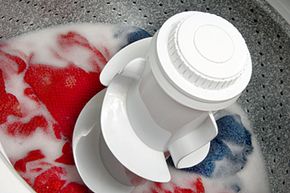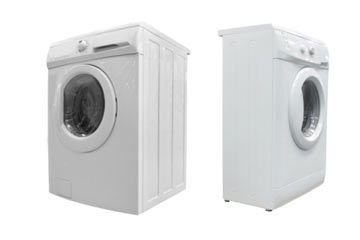One of the first things people notice about you is what you're wearing. This doesn't just mean the style and fit of your clothes, but also how clean and new or dirty and worn those clothes are. Because our clothes are so important to us, we put a lot of energy into keeping them clean.
The most common way we clean our clothes and linens is wet cleaning, or the use of water and some type of soap. In contrast, dry cleaning uses chemicals or ultrasonic devices to loosen and remove dirt and stains without water. While you'll usually go to a professional dry cleaner shop for dry cleaning, you can do wet cleaning yourself at home or at a self-service laundromat. The washing machine itself has become a major part of setting up a home, and doing laundry is probably part of a regular routine for you and your family.
Advertisement
We've come a long way in automating the chore of doing laundry. Patented in 1860, the Union Washing Machine consisted of a hand-cranked device that rubbed clothes between two washboards inside a bin of boiling water and soap. Two years later came the Union Wringer patent. The wringer attached to the washing machine as a means of wringing out clothes after the machine finished washing. This design was one of many similar inventions in the 19th century that people dubbed "washing machines" long before the use of electricity [source: Van Name & Co.].
Today's washing machines work with the same principle as the originals: They loosen dirt from clothes and linens with soap and water, and then rinse and squeeze out as much water as possible. Modern washing machines, though, are almost completely automated. Electric motors have completed the hard work since the early 20th century, and there's a good chance you've never used a washing machine without a built-in spin cycle.
So what are washing machines actually doing to get the laundry clean? This article answers that question, including the basic mechanics behind modern machines, the various cycles the machine uses to clean clothes and the important differences between top-loading, front-loading and high-efficiency washers.
Advertisement




